Cats are tidy creatures by nature, so when your cat starts avoiding the litter box, it often signals that something isn’t right. Whether it’s a health concern, unclean litter box, or stress in the environment, understanding what’s behind cat litter box avoidance is the first step in fixing it.
Let’s explore the most common reasons why your cat doesn’t want to use the litter box anymore—and how to address the issue with confidence and care.
There can be several reasons why your new kitty isn’t using the cat litter box. These may include –
- The box is too dirty
- The litter type or smell has changed
- There’s a new pet or person in the house
- The litter box has been moved
- The cat is ill or in pain
- The box is hard to access
These issues are normally easy to fix, but it starts with paying close attention to your cat’s preferences and routine.
Here are the 12 most frequently asked questions most concerned cat parents ask us about kitty litter box habits.
- How frequently should I clean the litter box?
- What is the right choice of litter for my cat?
- How do I choose the right litter box for my cat?
- Where do I place the litter box?
- How can I train a new kitten to use the litter box?
- Why is my cat not using the litter box?
- Why is my cat peeing/pooping outside the litter box?
- Why is my cat mewing loudly before using the litter box?
- Why is my cat going to the litter box and scratching but not peeing?
- How do I manage the litter box in a multi-cat household?
- Can my cat get UTI from using a litter box?
- My cat/kitten keeps peeing on the bed or sofa. How do I clean cat pee?
Here are the answers to all of these questions from the expert veterinarians at Vetic.
1. How frequently should I clean the cat litter box?
We clean our bathrooms frequently. We flush every time we use the loo. So why subject your cat to peeing and pooping on an accumulating pile of the same? Cats are clean by nature and they do not like to use dirty litter boxes. You need to clean the clumped litter from the litter box at least two times a day.
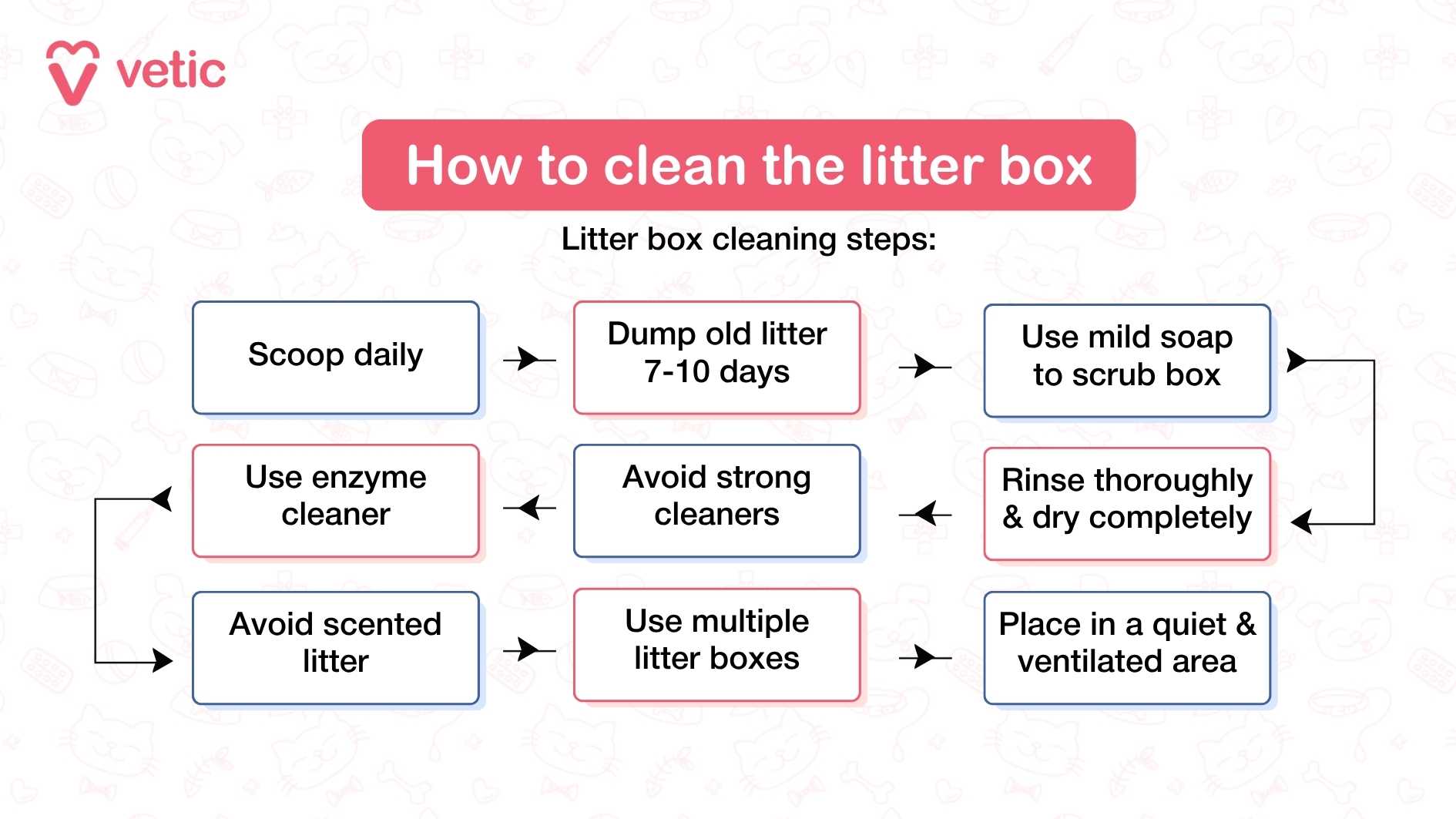
Now, that may not be possible for many cat owners with their busy schedules. So, begin by setting up two litter boxes side by side.
Every morning or night, scoop out the clumped litter along with your cat’s work of art. You do not need to throw out the unused litter every day.
Remember:
- Scoop waste at least once per day
- Top up litter regularly
- Do a full litter change and clean the tray every 7–10 days
- Wash with mild, unscented soap—don’t use bleach or floor cleaners
- Dry the litter tray completely before adding new litter
Treat your cat’s “bathroom” the same way you treat yours.
2. What is the right choice of litter for my cat?
Several people prefer scented litter because they fear the house will smell terrible after their cats go do their business. The truth is – any good quality cat litter with clumping properties will absorb the smell of pee and poo instantly.
Cats have a very sharp sense of smell and you need to keep that in mind while choosing the cat litter brand and type. The safest choices include highly absorbent, clumping, bentonite litter without any added fragrances.
Anyway, if you are cleaning your cat’s litter box correctly, twice daily, you should not have to worry about the horror of cat poo smells. The safest choices include:
- Unscented, clumping clay
- Bentonite-based absorbent litter
- Low-dust, fine granular texture
Avoid pellet litter or silica if your cat is used to sand-like textures. If switching litter, do it gradually over 7 days to prevent rejection.
3. How do I choose the right cat litter box?
The right style of the litter box will depend upon the size of your cat, their age, special health needs and litter box habits.
The most common choices of litter boxes include –
High-side uncovered litter boxes
The sides are typically around 5 inches high to prevent litter from flying everywhere after your kitty is done with their business. You can opt for extra large ones if your purry friend is also on the larger side. Besides, keeping a larger-sized open-top litter box allows your kitty to move freely and reduces the chances of accidents too!
One-side low litter boxes, uncovered
Low-side cat litter boxes are useful if you have a kitten or a cat with mobility issues. You cannot ask a kitten or an old cat with arthritis to jump over 5-inch high walls every time they have to pee. Accidents are very common in households that use high-side litter boxes for kittens and old cats.
Sifting litter boxes
They look like regular litter boxes but they have an additional sifter that sits above the bottom of the tray. You can shake the litter box from time to time so the clumped litter easily separates from the fresh granules that fall to the bottom. It makes separating and removing used litter from unused litter quite easy.
Covered litter boxes
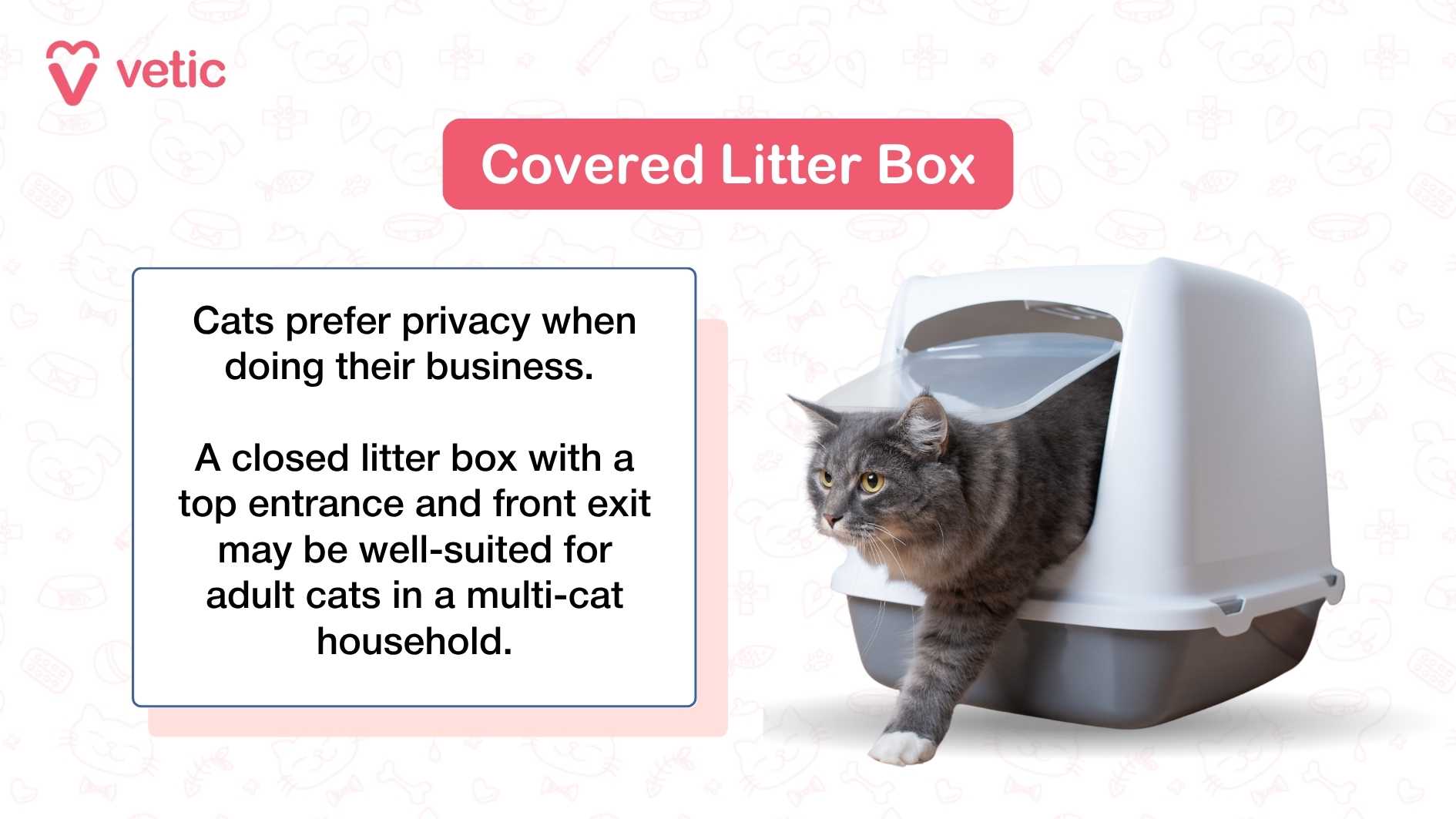
These look cosy and seem hygienic since litter can’t fly all around once your cat has finished using them. However, you need to think about the size and comfort of your cat before you buy one. The litter box should be at least 1.5 times the size of your cat.
Many cats do not like cramped spaces, so make sure it’s big and high enough for your cat to comfortably move around inside. Your cat shouldn’t feel trapped or cramped inside the litter box.
Check out the range of cat litter box furniture that enables the humans to disguise the litter box as a storage unit, but leave both sides open for easy access of the cat(s). They typically come with sliding doors in front just like a regular cupboard, so you can take the cat litter tray out and clean properly.
Automated, self-cleaning litter boxes
Okay! So, you may find it extremely convenient since you don’t have to scoop up poop every time your cat uses the litter box. It’s self-cleaning, for G’s sake! However, imagine sitting on the toilet and suddenly it begins rumbling, rotating and finally flushing by itself. You would be more than surprised, wouldn’t you?
So, why subject your cat to that shock? Allow them to do their business in peace. Most importantly, if they get too spooked by the noises and movements of their loo, they may stop using a litter box altogether.
Avoid self-cleaning litter boxes if your cat isn’t used to them. Automatic cat litter box may not be such a good idea for cats used to sifting litter boxes or the other regular ones.
4. Where do I place the cat litter box?
Always place the litter box in places where your cat can go easily. For example, if you place it in the bathroom ensure that you leave the door open for your cat. Avoid placing it inside closets and store rooms which only you can open.
Do not keep the litter tray on the roof if you live on the ground floor of a 3 storied house. If you live in a multi-storied house place at least one litter box for your cat on each floor.
Odour and hygiene won’t be an issue as long as you clean them daily. You can also use a litter box mat to restrict the spraying of litter across the floor.
5. How can I train a new kitten to use the cat litter box?
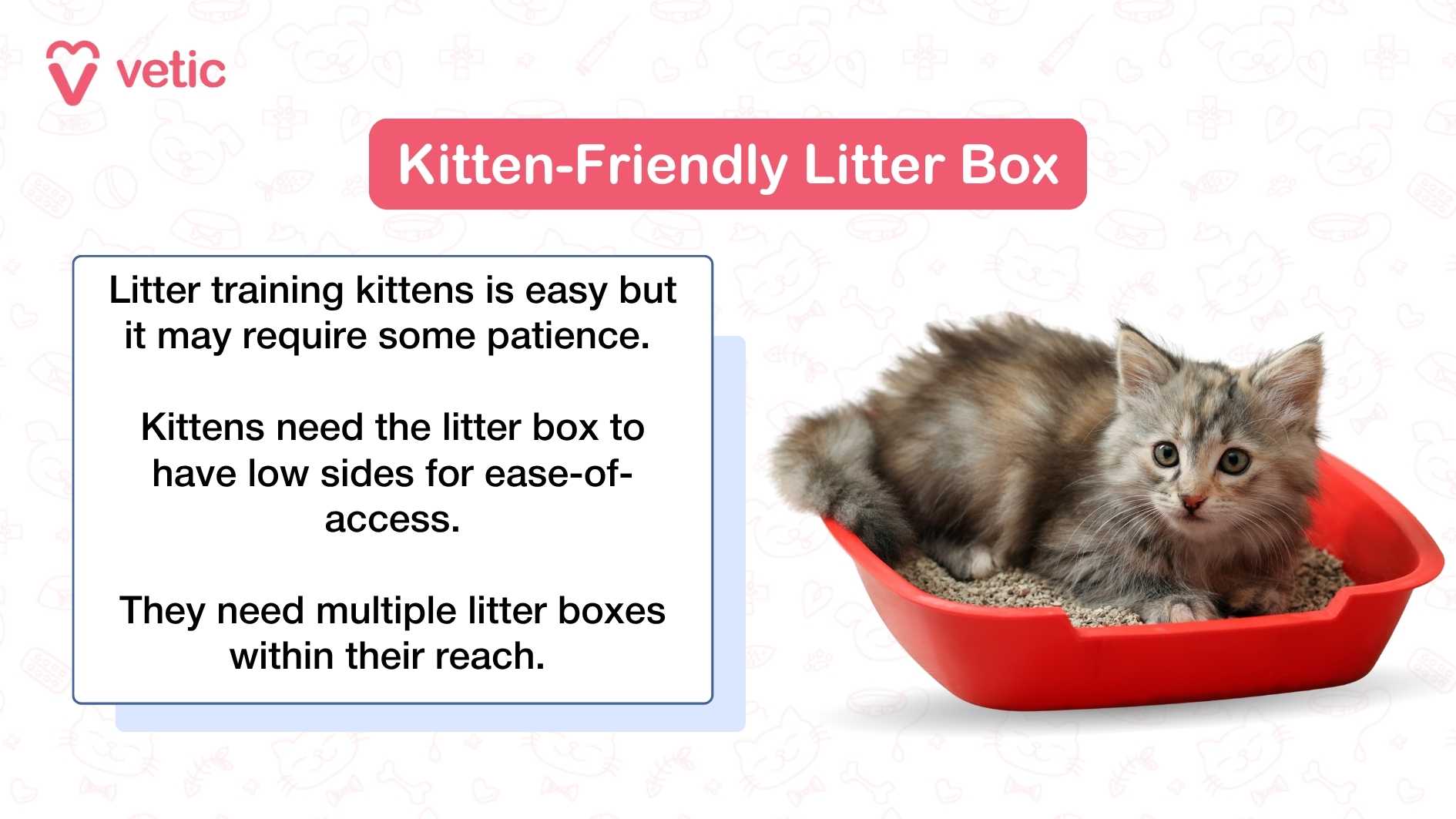
Kittens often need a little guidance. You can train them by:
- Placing them in the box after meals and naps
- Gently using their front paws to make scratching motions
- Providing shallow, open-top boxes that are always accessible
- Show your kitten the location of each litter box in the house
- Keeping boxes in quiet, visible areas—not hidden corners
Reward your kitten with praise when they use the box correctly. Be patient; it’s a learning process!
6. Why is my cat not using the litter box?
If your cat was using the litter box fine before but has now stopped, consider what’s changed:
- New pets or people in the home may cause anxiety
- Home renovations or rearranging furniture may lead to avoidance
- Litter box location moved to a loud, hidden or inaccessible place
- Type or scent of litter changed recently
- Your cat is aging and may be finding it difficult to access the box
Cats love consistency. Even the smallest change in their environment can trigger behavioral changes.
However, if there’s no external change that’s causing your cat to reject the litter box, there’s cause for concern. You should visit the nearest cat expert vet.
7. Why is my cat peeing/pooping outside the litter box?
If your cat goes outside the litter box it means they want you to pay attention. Sometimes, they will experience discomfort and pain while urinating or defecating. That’s when they go right next to the litter box or in a place that can catch your attention easily.
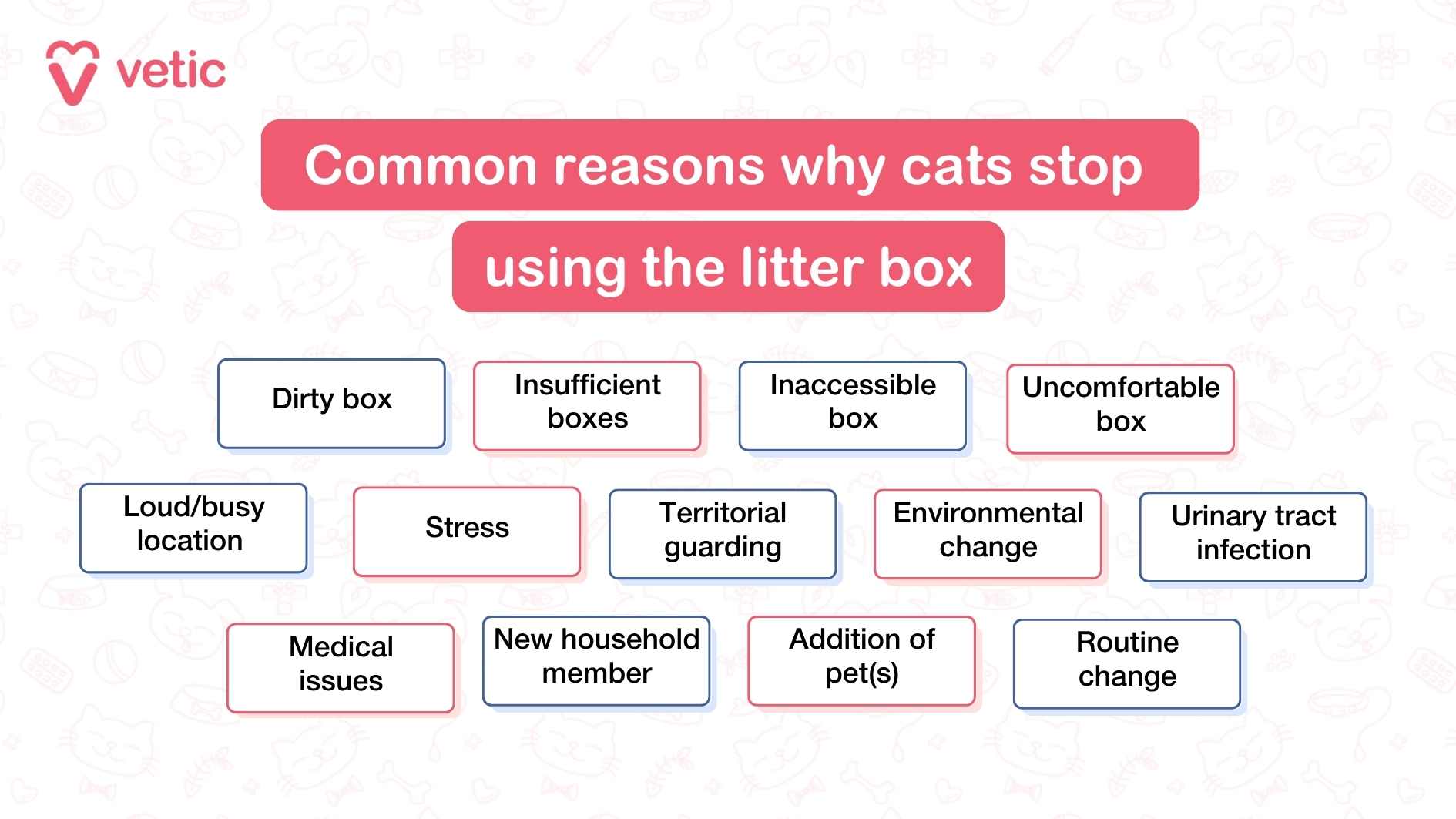
If all boxes are clean and well placed and your cat still refuses to use them, the problem likely stems from:
- Stress or anxiety
- Chronic pain
- A prior traumatic litter box moment (like pain during peeing)
- Negative associations with the location or box type
This can quickly become a behavioral issue. Speak to a vet or feline behaviorist if multiple changes don’t help.
In such cases, it’s time to book a vet appointment, get your cat’s complete blood profile done and go for imaging tests.
8. Why is my cat mewing loudly before using the litter box?
Your cat may mew loudly before urinating or defecating to either attract your attention or announce that they are experiencing pain. Either way, it’s safe to interpret it as, “Hooman, there’s something wrong!”
Any health issue that interferes with the peeing and pooping process can cause your cat to “yell” before going.
You may also want to look out for extra hard and dry poop. Constipation can not only cause your cat to mew loudly before pooping but also cause long-term health problems.
9. Why is my cat going to the litter box and scratching but not peeing?
Sadly, that indicates a serious issue. If your cat has been doing this for over 8 hours without peeing at all you should rush them to an emergency vet clinic where they have complete blood count, liver function test (LFT), kidney function test (KFT), and imaging tests.
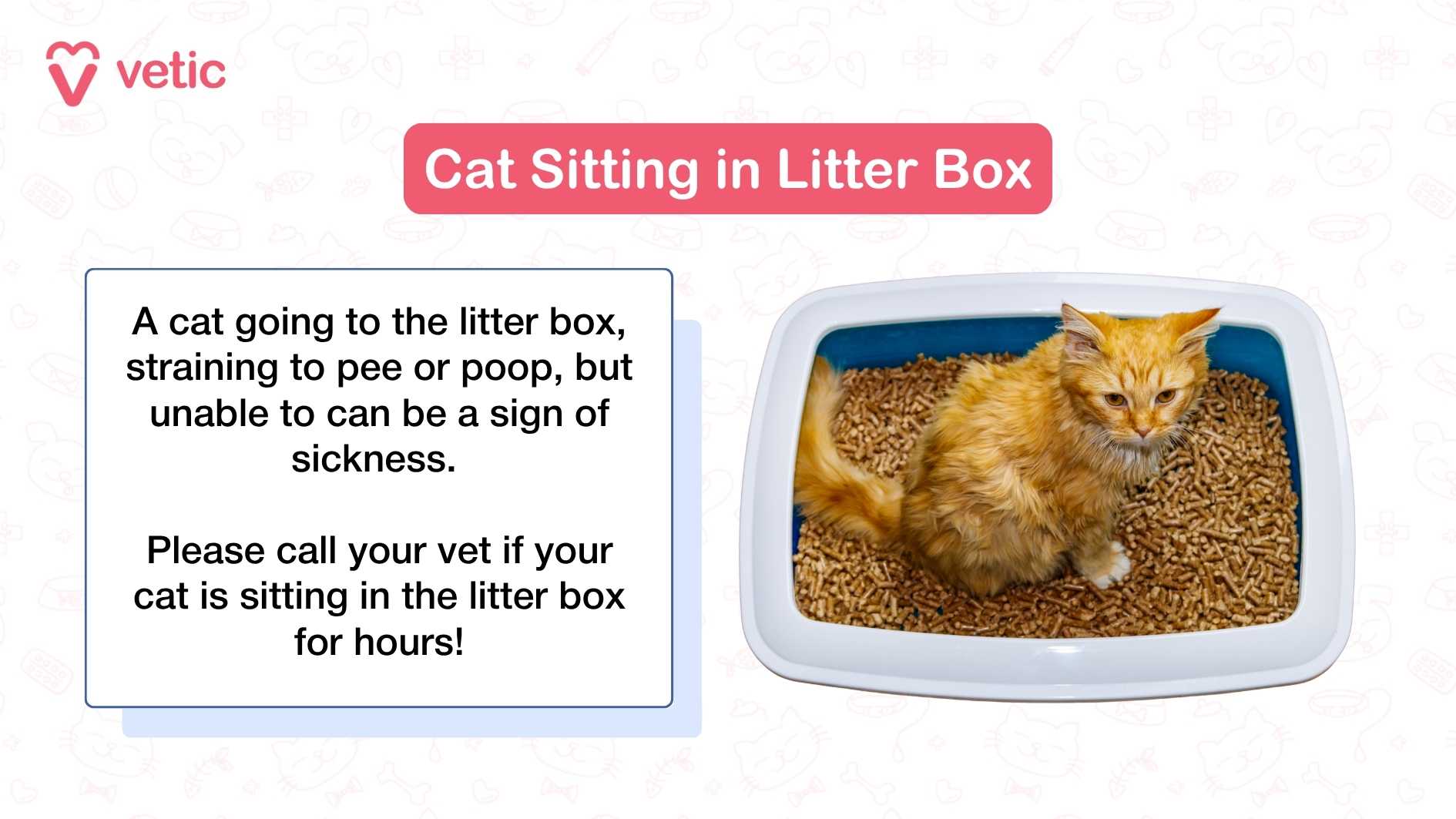
They may be experiencing a blockage in their urethra that’s preventing them from urinating. When detected at the right time, many issues that cause urine blockage can be treated and managed.
10. How do I manage the litter box in a multi-cat household?
In a multi-cat household, you should follow the n+1 litter box rule.
n refers to the number of cats in your home. So you need to keep at least one extra litter box. Do not increase the quantity of litter in each box but try to add at least one additional box on every floor.
So, if you have 2 cats, you should have at least 3 litter boxes on each floor of the house.
11. Can my cat get UTI from using a litter box?
Your cat can only get a UTI from the litter box if you are not cleaning the litter boxes properly.
Scoop your cat’s urine clump and faeces every day. Make sure they do not have to pee on their poop.
Change the entire cat litter at least once in 5 days.
Wash the tray with cat-friendly litter box cleaners. Avoid harsh soaps, floor cleaners, antiseptic solutions and sanitiser sprays to clean the litter box. Dry it properly after washing (if possible, keep it in the sun for a while).
12. My cat/kitten keeps peeing on the bed or sofa. How do I clean cat pee?
Cleaning cat pee is more difficult than most people believe.
Firstly, never use vinegar or ammonia-containing products. They will only enhance the smell and attract the cat to go in the same location again.
Never use bleach or vinegar. The smell can actually make cats more likely to return to that spot.
Best practice for odor and stain removal:
- Blot the pee with absorbent cloth or paper towel
- Apply an enzyme-based pet stain remover
- Let sit for 10–15 minutes
- Repeat if necessary
- Air dry or use fans to completely remove moisture
You should always clean up if your cat poops or pees in the wrong places. Remove any pee smell from your furniture and furnishing as soon as you detect it. Cats have the habit of peeing in one place repeatedly if they find the pee smell. Using a specially formulated spray will discourage them from spraying or peeing on random surfaces.
Visit the nearest Vetic Pet Clinic to pick up your bottle of pee stain and smell remover solution today.
Key Takeaways – A Cleaner Box, a Happier Cat
- Scoop waste daily. Wash boxes regularly.
- Use unscented, clumping litter that your cat is familiar with.
- Choose large, open litter boxes with low sides, especially for elderly cats.
- Place boxes in quiet, accessible, and clean areas.
- Provide one box per cat, plus one extra.
- Seek veterinary help if there’s vocalizing, straining, or sudden changes in waste habits.
Wrapping this up
Cats are complex creatures and you cannot expect them to use a litter box naturally after you bring them home. Thankfully, most cats have the habit of scratching soft surfaces such as soil or sand before going and then burying.
It may sound funny, but if your kitty is friendly, you can try to make small scratching motions on the cat litter 3-4 times a day with their front paws. That is usually enough to help them overcome their fear of foreign materials (cat litter) and objects (cat litter box).
You should look for litter with low-dust, no scent and easy-access litter boxes. Use a shallower litter box for at least the first couple of months.
Use simpler, open-top litter boxes for the first 2 to 3 months even for adult cats. You can later try covered litter boxes and top-entry litter boxes by placing them beside the ones they are already used to.
If your cat is not using the litter box despite making changes to the litter quality, litter box type and position, you should speak to a veterinarian who’s experienced in cat behaviour. Speak to the senior veterinarians at Vetic today!
Tl;DR
FAQs about Cat Litter Box Training and Problems
How frequently should I clean the litter box?
Scoop at least once daily; twice if you have more than one cat or a picky senior.
What’s the best litter type for my cat?
Unscented, clumping clay or silica litters rank highest for cat acceptance and odor control.
How do I choose the right box size?
Box length should equal 1.5-times your cat’s body length nose-to-tail; low-entry models help kittens and arthritic cats.
Where should I place the litter box?
Quiet, open areas with easy access; avoid corners where cats feel trapped and noisy rooms that may startle them.
How can I train a new kitten?
Set them in the box after meals/naps and mimic digging motions. Use shallower boxes the first two months.
Why is my cat suddenly avoiding the box?
Check for recent litter changes, box cleanliness, location shifts, new stressors, or medical causes like UTIs.
Why is my cat peeing outside but near the box?
Pain during elimination often makes cats associate the box with discomfort; consult a vet for FLUTD screening.
Why does my cat yowl before using the box?
Crying may signal constipation, pain, or arthritis; schedule a veterinary exam.
Why is my cat scratching in the box but not peeing?
Could indicate urethral blockage. Seek emergency care if your cat doesn’t pee in eight hours.
How many boxes do I need for two cats?
At least three: one box per cat plus one extra, ideally on each floor.
Can dirty boxes cause UTIs?
Unhygienic litter can lead to bladder inflammation or infection in susceptible cats.
Best way to remove cat pee odor?
Use enzyme-based cleaners; avoid ammonia products that lure repeat marking.
